Canon EOS 400D Review
Canon EOS 400D
The Rebel is here...at long last

Verdict
Key Specifications
- Review Price: £475.00
Over the past six months I’ve reviewed nearly all of the current range of entry and mid-level digital SLRs, including the Sony Alpha A100, Canon EOS 30D, Nikon D200, Pentax *ist DL2, Nikon D80, Olympus E-400, Samsung GX 1L and Pentax K100D. This week it’s the long-awaited turn of the Canon EOS 400D (Digital Rebel XTi in the USA). The camera was launched in August last year, and I’m somewhat disappointed that it’s taken this long for Canon to make a review sample available to me, so my apologies to the many readers who have been asking for this review for several months. I hope it’s been worth the wait.
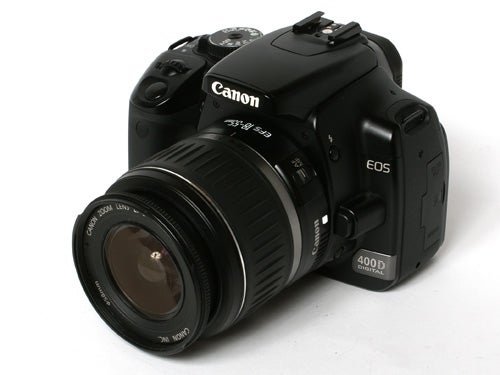
Although Nikon might disagree, it is Canon that is credited with having started the current market for consumer-priced digital SLRs with the launch of the EOS 300D in August 2003. It was the first DSLR to break the £1,000 barrier, and despite criticism about its build quality and lack of features it was a massive success. It was followed a year and a half later by the EOS 350D, which increased the megapixel count from 6.3 to 8.0, improved performance and build quality and added some of those missing features. Needless to say it was another resounding success, offering consumers an affordable entry into Canon’s massive system of lenses and accessories.
When the 400D was launched it had an RRP of £719.99 in a kit with the 18-55mm f/3.5-5.6 lens, or body only for £649.99. Just six months later the kit price is down to £475, while you can get one body only for around £440. Compared to the other 10MP DSLR cameras that are currently available it is slightly more expensive than the Sony Alpha A100 (£477 with 18-70mm, £433 body only), but a bit cheaper than the Olympus E-400 (£499 with 14-42mm), and quite a bit cheaper than either the Nikon D80 (£699 with 18-70mm, £532 body only) or the new Pentax K10D (£669 with 18-55mm, £582 body only).
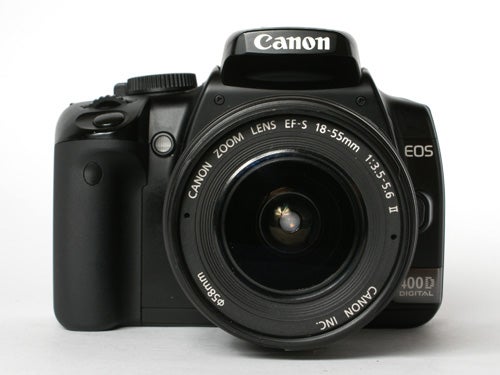
The EOS 400D is up against some very accomplished competition, but it gets off to a running start by being a third-generation product, with a design that has evolved over several years. Physically it is very similar to the 350D, with a lightweight and compact body made of tough polycarbonate plastic over a stainless steel chassis, although it is in fact a completely new body. Build quality is very good, with none of the cheap and flimsy feeling of the 300D. The battery and card hatches have metal hinges, and although the port cover is a rubber plug it fits well and will keep dust at bay.
The handgrip is still a bit skinny compared to the generous grips on its Sony and Nikon rivals, but even with my large hands it felt comfortable and secure to hold. It is slightly heavier than its predecessor, weighing 510g body only as opposed to 485g for the 350D, and it is a whole millimetre thicker, measuring 126.5 x 94.2 x 65mm (64mm for the 350D). It is smaller and lighter than the Sony A100, but a little larger and heavier than the Olympus E-400.
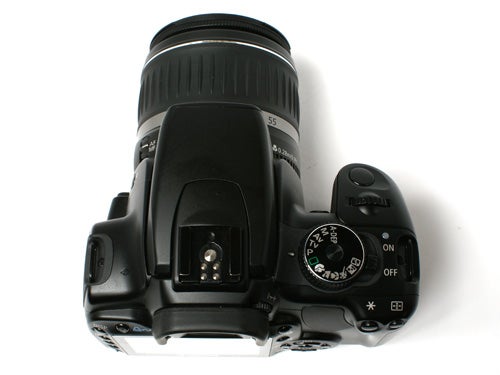
There are some significant external changes, at least one of which will not be welcomed by everyone. It loses the 350D’s backlit LCD data display, opting instead to present shooting and status data on the monitor screen, as do most of the current mid-range DSLRs. The monitor is larger and sharper, 2.5in and 230k pixels versus 1.8in and 115k pixels for the 350D, which is a big improvement, and like the Sony A100 and Olympus E-400 it has a proximity sensor under the viewfinder eyepiece so the monitor shuts off when you put the camera to your eye. Data is displayed in black text on a white background, which is easy to read, and is laid out is a clear and concise manner.
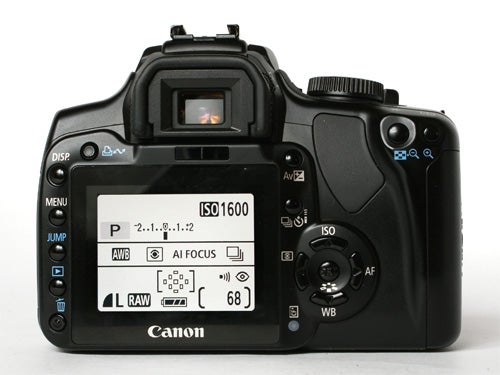
The viewfinder is also somewhat improved, with a nine-point focus indicator and a bright green LED information display. It seems larger and brighter than the 350D, and is about the same as the viewfinder on the Sony A100 and significantly larger than that of the Olympus E-400.
The most obvious internal improvement is the CMOS sensor, which is increased in resolution to 10.1 megapixels and now includes an automatic cleaning system, which uses a combination of an anti-static coating on the anti-aliasing filter, ultrasonic vibration and pixel mapping to ensure that dust on the sensor is less of a problem.
The 400D uses the same highly acclaimed Digic II image processing engine as the 350D, but is now equipped with a nine-point AF system, a much wider range of features and a vastly improved control interface. The 400D offers a huge range of picture adjustment and control, but at the same time manages to be accessible and easy to use. The key element is the Picture Style option. There are nine pre-set Picture Style settings, all of which can be customised for sharpness, contrast, saturation and colour tone, with nine increments of adjustment for each parameter. The default settings are for standard, portrait (less sharpness) landscape (extra sharpness), neutral, faithful and three user-defined settings. When shooting, these Picture Style settings can be selected by simply pressing the Set button and scrolling up or down on the D-pad. It make accurate professional picture quality control very easy. Thankfully the annoying feature of the 300D and 350D, where menu choices had to be confirmed by pressing the Set button has been dropped.
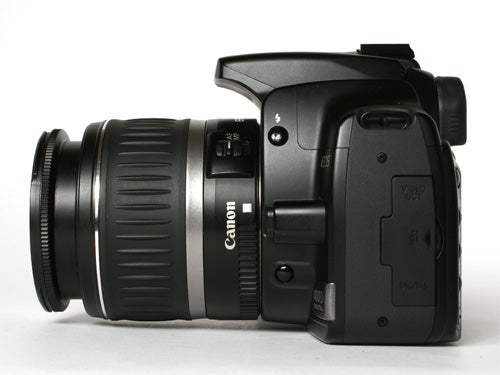
Other frequently used options including ISO setting, metering mode, AF mode and white balance are controlled by scrolling through a list of options using the D-pad buttons, which is again very quick and simple. Likewise exposure compensation, drive and self-timer mode, AF point selection and exposure lock are all controlled by external buttons. The menu is only used for more uncommon adjustments, such as flash power output, bracketing parameters or colour space, which is a sensible arrangement that will suit most users.
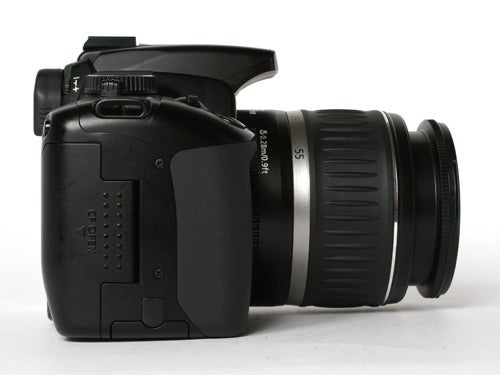
In terms of performance, the EOS 400D is everything we’ve come to expect from a Canon DSLR. It starts up virtually instantly, and in continuous shooting in fine JPEG quality mode it can rattle off 21 shots at an impressive 2.5 frames per second before it has to pause to write data to the memory card. Even then, the progressive buffer means you don’t have to wait until it’s finished processing every frame before you can shoot again. Even in RAW plus fine JPEG it can shoot at the same speed, although this time the buffer can hold only eight shots, and you have to wait a little longer before shooting again. One slight annoyance, which was also present on the 300D and 350D: if you open the card hatch the camera shuts down immediately, and any images still waiting in the buffer are lost, so make sure you have enough room on your card before you start shooting.
The AF system is also predictably superb. It appears to be the same system used in the EOS 30D, which is no bad thing. It is extremely quick and accurate even in low light, and it would probably be even quicker if it wasn’t for the camera’s one weak point. The supplied kit lens is a cheap piece of plastic tat that I would be mildly disappointed to find in a Christmas cracker. It lacks contrast, shows significant barrel distortion at its widest setting, and just feels cheap and nasty. It has a plastic lens mount, a rather loose zoom action and the front element tube wobbles when provoked.
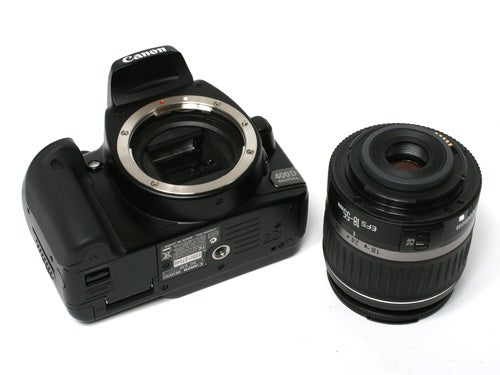
I’m a bit puzzled by the image quality. I’ve read some reviews that have absolutely raved about it, saying it’s easily the best of the 10MP DSLRs, but personally I wasn’t that impressed. It’s good, don’t get me wrong, but it’s not ”that” good. In terms of absolute sharpness and detail, it produced virtually identical results to the Olympus E-400, Sony A100 and Nikon D80. I’ve taken the same shots with all four cameras, and for three of them at least you can compare the results right here by clicking on the links in the first paragraph of this review. I think you’ll agree that it really is no better. I also found significant levels of purple fringing around some burned-out highlights, and while it might have marginally superior dynamic range, it’s not enough to give it a significant advantage. Colour rendition was very good, but then again it’s not a problem for any recent DSLR that I’ve tried.
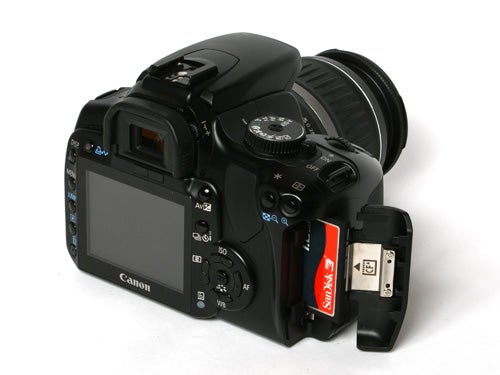
Surprisingly for a canon DSLR, I was also not massively impressed by the image noise control. Shots at 100-400 ISO were fine, but there was noticeable colour speckling in darker areas at 800, which spread to the mid-tones at 1600 ISO.
”’Verdict”’
While the 400D is unquestionably a very good camera, with superb performance, an excellent control system and wide range of picture control options, and while it is a distinct improvement on the 350D, it doesn’t really stand out in comparison to any of the other entry-level 10MP DSLRs that are currently available. The kit lens is also very weak.
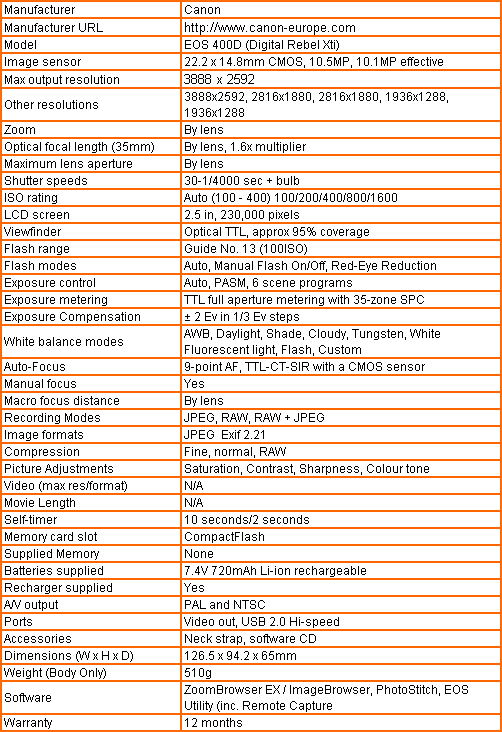
”A range of test shots are shown over the next few pages. Here, the full size image has been reduced for bandwidth purposes, and a crop taken from the original full resolution image has been placed below it in order for you to gain an appreciation of the overall quality.”
—-
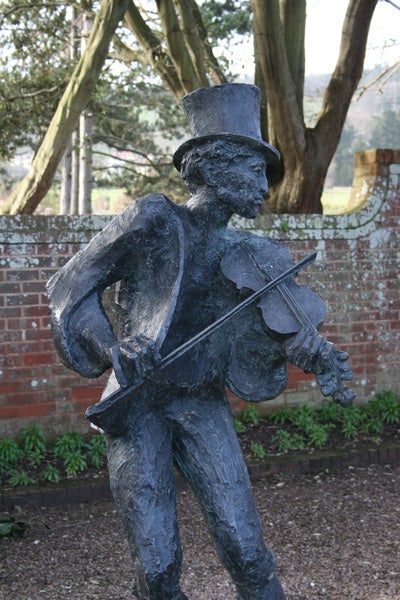
—-
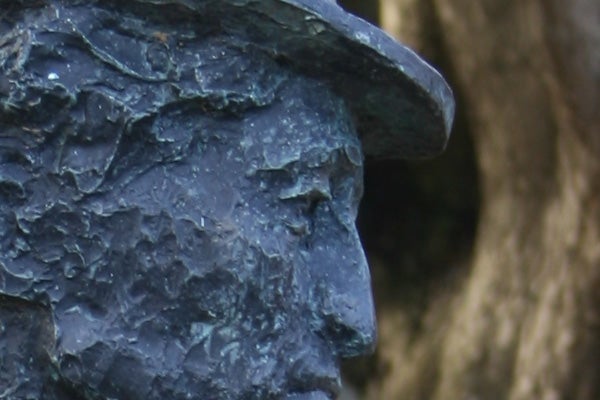
1/30th sec, F5.6, ISO 100
At 100 ISO the picture is clean, well detailed and noise free, everything we’ve come to expect from a Canon DSLR.
—-
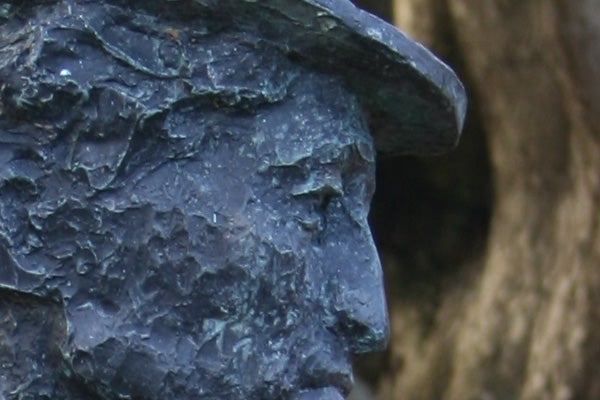
1/60th sec, F5.6, ISO 200
At 200 ISO the picture is virtually identical to the previous one, with no visible noise.
—-
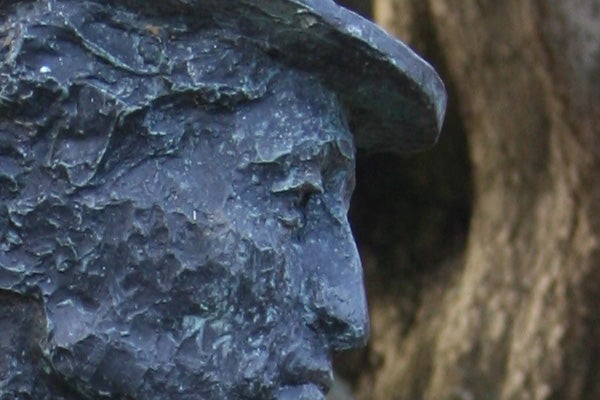
1/80th sec, F7.1, ISO 400
At 400 ISO there is slightly less contrast, but the image is still free of noise.
—-
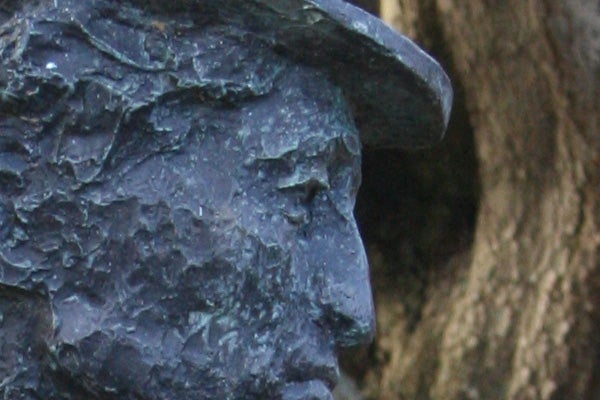
1/125th sec, F8.0, ISO 800
At 800 ISO there is some colour speckling visible in the darker areas of the frame, but on the whole image quality is still very good.
—-
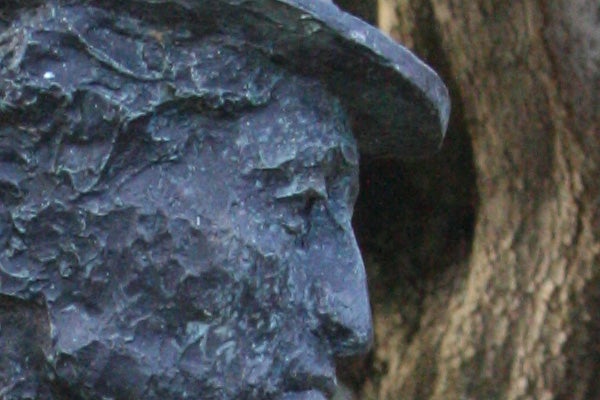
1/160th sec, F10.0, ISO 1600
At the maximum 1600 ISO there is some visible image noise over dark and mid-tone areas, but the image quality is still good enough to print.
”A range of test shots are shown over the next few pages. Here, the full size image has been reduced for bandwidth purposes, and a crop taken from the original full resolution image has been placed below it in order for you to gain an appreciation of the overall quality.”
—-
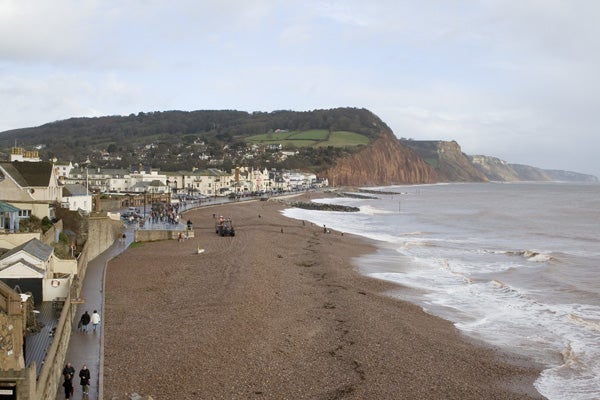
I’ve taken this same shot under virtually identical lighting conditions with a range of 10MP DSLRs, so you can get an accurate picture of how they compare.
—-
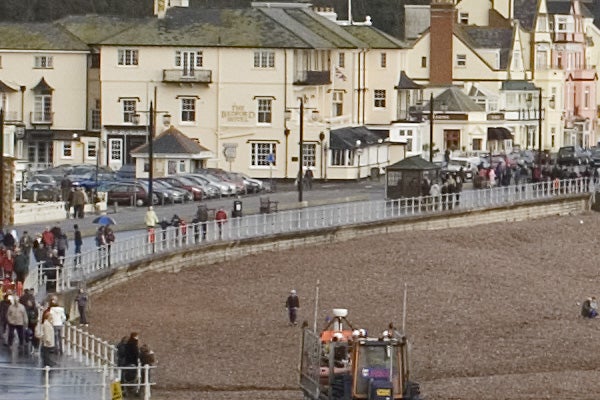
This is a 100 percent crop from the image above. Refer to the reviews of the Nikon D80 and the Olympus E-400 for comparison shots.
—-
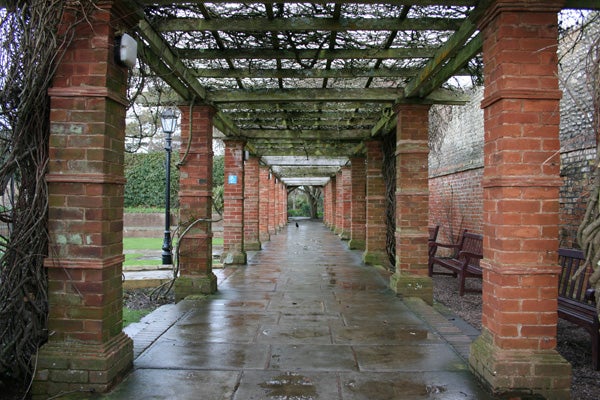
The 18-55mm kit lens supplied with the 400D isn’t up to the usual high standard one associates with Canon optics, with noticeable barrel distortion at wide angle. It’s be a better idea to buy the camera body-only and splash out on a decent lens.
—-

The lens has relatively poor edge sharpness, and surprisingly this shot shows a significant level of purple fringing.
—-
”This page consists of resized images so that you can evaluate the overall exposure.”
—-
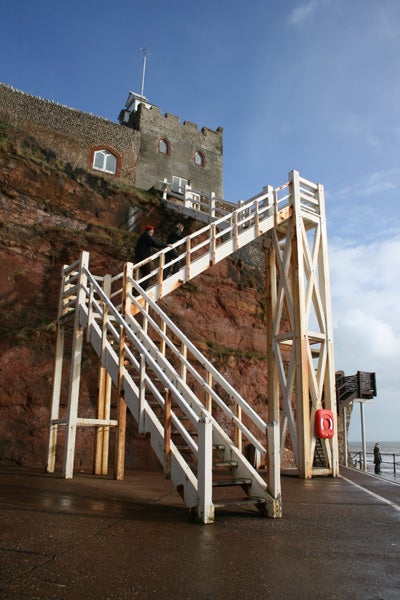
You have no idea how long I had to wait for some blue sky this weekend, but it was worth it to show the 400D’s excellent colour reproduction.
—-
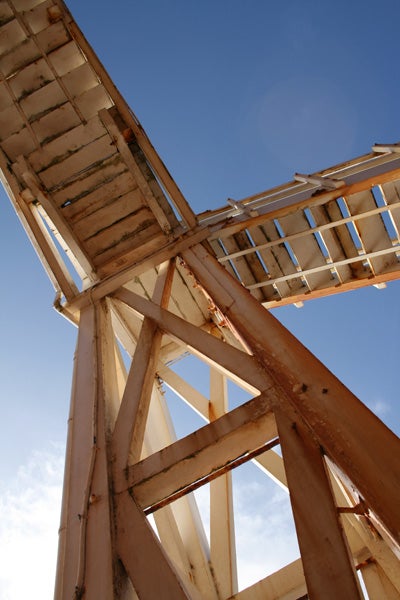
The high dynamic range of the Canon CMOS sensor and the excellent metering system make light work of this high-contrast shot.
”This page consists of resized images so that you can evaluate the overall exposure.”
—-
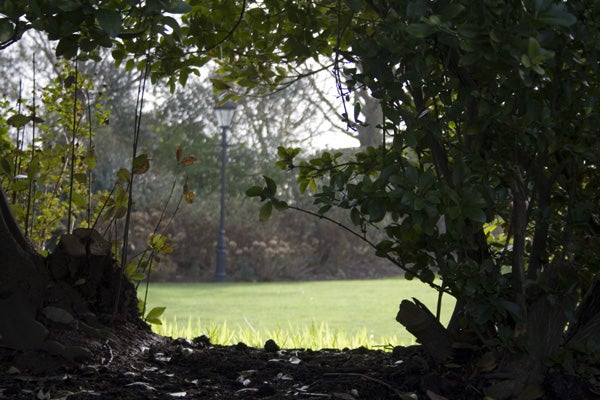
Again, the 35-zone evaluative metering system has coped with this unusual shot, capturing both shadow and highlight detail.
—-
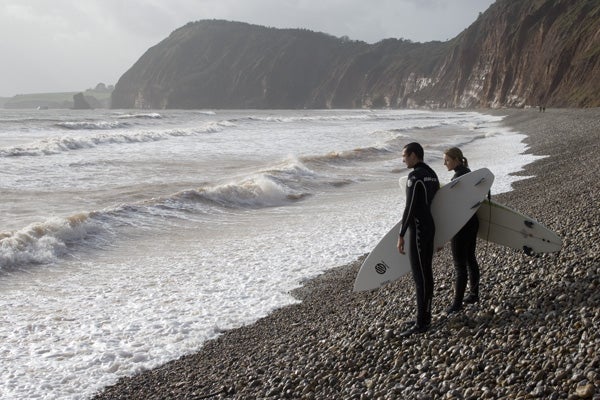
Shot in RAW mode, I was able to level the horizon before converting the image to JPEG. The 400D’s extremely fast nine-point AF system means you’ll never miss a spur-of-the-moment shot like this, even if the subjects aren’t in the centre of the frame.
Trusted Score
Score in detail
-
Value 9
-
Image Quality 9
Features
| Camera type | Digital SLR |
| Megapixels (Megapixel) | 10.1 Megapixel |
| Optical Zoom (Times) | 3x |
| Image Sensor | CMOS |
| LCD Monitor | 2.5 in |
| Flash modes | Auto Flash, Red-eye Reduction, Flash OFF |
| Memory card slot | CompactFlash (CF) Card |

